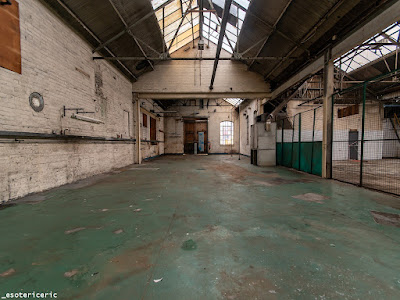History
The Manchester Union workhouse was originally situated in New Bridge Street (built 1792). When the building proved inadequate for its purpose a new workhouse was built in Crumpsall in 1855 on a site adjacent to the Prestwich Union Workhouse just north of Crescent Road.
In 1915 three poor law unions in the area were amalgamated into the single Manchester Union. At Crumpsall the dividing wall between Prestwich Union Workhouse and the old Manchester Union was demolished. Although the workhouse continued to function as a poor law and later public assistance institution until around 1940, it was the infirmary and the provision of medical care that saw real development.
Crumpsall benefitted greatly from the amalgamation of 1915. The Prestwich Union Workhouse became Crumpsall Infirmary Annexe and was used mainly for incontinent and chronically-sick patients. In total Crumpsall had around two thousand hospital beds and a separate accommodation for mental cases.
In 1923 a pathological laboratory was opened at Crumpsall which dealt with pathological work from all the poor law hospitals in Manchester, work previously done at the Public Health Laboratory. Crumpsall Infirmary was also a recognised centre for the treatment of venereal disease and accepted patients not only from the Manchester Union, but also from other poor law unions in Lancashire.
From 1922 an auxiliary hospital for paying patients was developed in the institution building which created the situation reported on in the Manchester Guardian, 4 July 1935, in which private patients were sharing wards with those too poor to pay for treatment. The Auxiliary Hospital, Crescent Road, as it was known, had a separate maternity ward and there is a surviving register of patients which may refer directly to this ward.
Like Withington Hospital, Crumpsall Hospital was recognised as a training school for nurses and midwives by the General Nursing Council and the Central Midwives Board.
By 1930 the Manchester Union Workhouse had become known as Crumpsall Institution. It was renamed Park House Hospital in 1939, and with the introduction of the National Health Services in 1948, became Springfield Hospital. The Infirmary later became known as Crumpsall Hospital. In 1975 the Springfield Hospital and Crumpsall Hospital amalgamated with Delaunay's Hospital to form Manchester General Hospital as part of the NHS reorganisation.
Source:
https://www.manchester.gov.uk/directory_record/212444/crumpsall_workhouse/category/1369/hospital
Esoteric Eric































